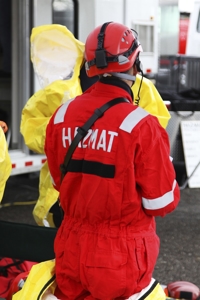
When a fire hits the home, your family members will only have minutes or even seconds to act. That's why October 13th has been designated as Home Fire Drill Day. It's the perfect opportunity for you and your loved ones to practice what to do should a fire break out. Follow the tips below, in conjunction with our home fire safety checklist, and use this year's Home Fire Drill Day as a chance to reinforce life-saving fire safety skills for everyone in your household.
1. Create your plan.
Effective home fire safety starts with a plan. Map out the rooms of your home and identify the closest exits and exit routes. It's a good idea to keep a copy of the escape plan in each bedroom. Make sure that each family member knows the plan, including what to do once they're safely away from the building.
2. Involve the little ones.
Kids practice fire safety regularly at school, so why not at home? With a little guidance, your children will be able to act quickly and automatically if a fire emergency occurs. Kids' fire safety is all about preparation, too – the last thing you want during a fire is for your children not to know how to act. Try incorporating games and other ways to make your fire drills fun, so that youngsters are better able to learn and retain the basics.
3. Go to the starting point.
When it's time to drill, tell kids and other family members to go to their designated starting points. For example, everyone might be in their bedrooms, or one child might be watching TV while the parents are in the kitchen. Scenarios that look like daily home life help make each drill useful and easy to understand.
4. Sound the alarm.
Even though the noise is jarring, it's good to practice your fire drill with your real smoke alarms. Have one of the adults set off the alarm using its test feature. When it sounds, everyone in the household needs to stop what they're doing and swing into action according to your pre-established plan.
5. Go to the safety spot.
The safety spot is somewhere outside of your home that you designate as the family meeting point upon evacuating the residence. Pick a large tree, a neighbor's lawn, a street sign on the corner, etc. It should be far enough from your home to be a safe location during a fire, but close enough that everyone can get to it quickly. Ideally, your safety spot should be accessible within two minutes or less of sounding the fire alarm.
6. Practice from other starting points.
After a successful drill, try mixing up starting points. This is good for kids' fire safety as well, as it will teach them to think on the fly. That way, no matter where they are in the home, they'll be ready and able to respond calmly if a real fire alarm goes off.
7. Teach kids to call 911.
Don't call 911 during your home fire drill, but make sure everyone understands how it works. Show kids how to use the phone if they're not already comfortable with it. Give them a script that they can tell the 911 operator, but keep it simple. A good one is: "My house is on fire right now. Please send firefighters to [your address]." Even though telling strangers personal information is off-limits in other scenarios, explain to kids that they can trust the person on the other end of the line if they ever have to call 911.
Hopefully, your home fire drill will always just be a drill. But if you ever experience an actual fire at home, effective preparation and adherence to proper home fire safety practices could save lives. Take the time on Home Fire Drill Day to make sure your family knows what to do in an emergency – you'll be glad you did.
And if disaster does strike, know that ServiceMaster Restore® is here to help. Our experts are available 24 hours a day, seven days a week, to help you recover from fire and smoke damage to your home. Contact us at 1-800-RESPOND to learn how we help families get back to normal after a fire.
